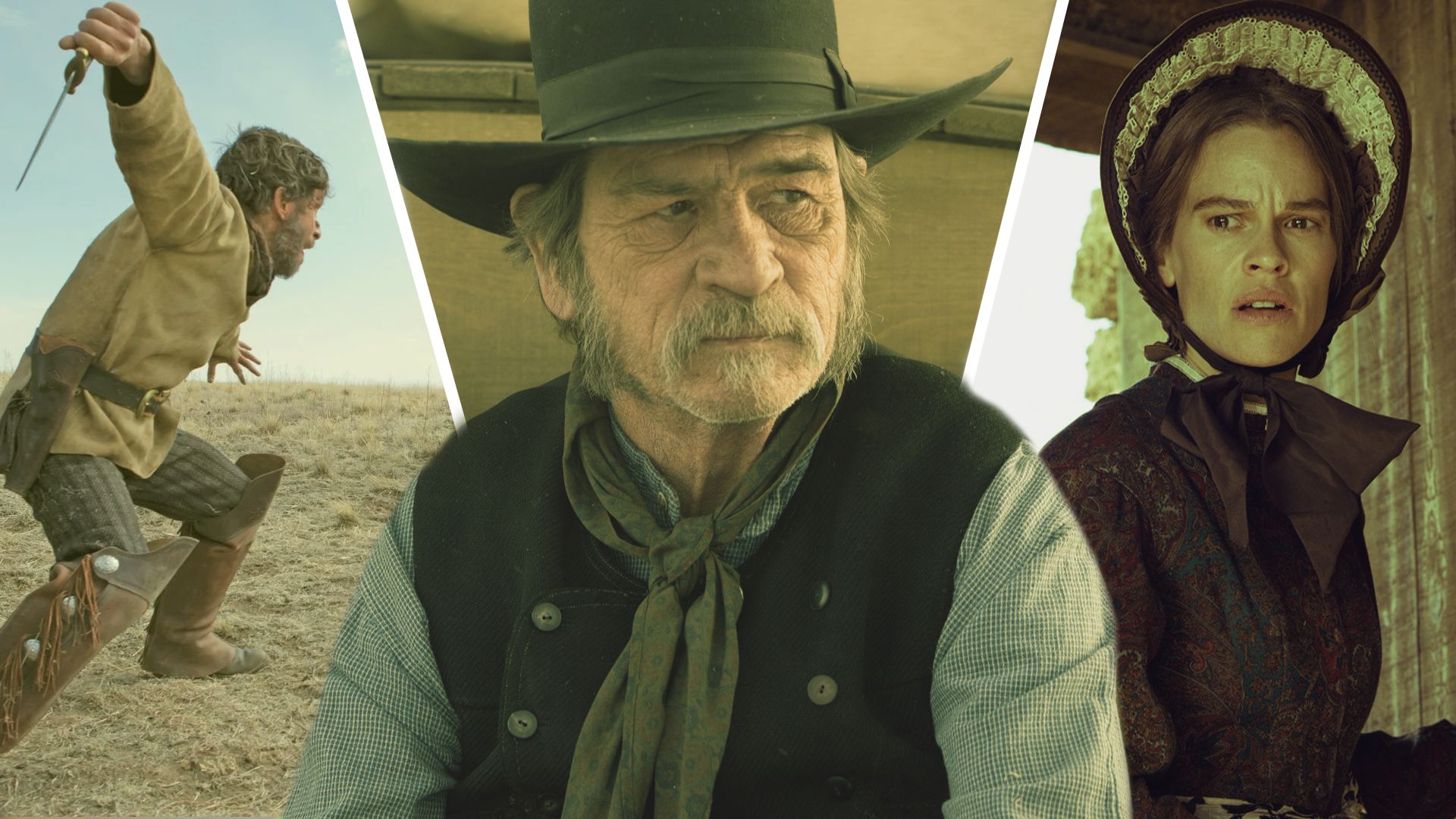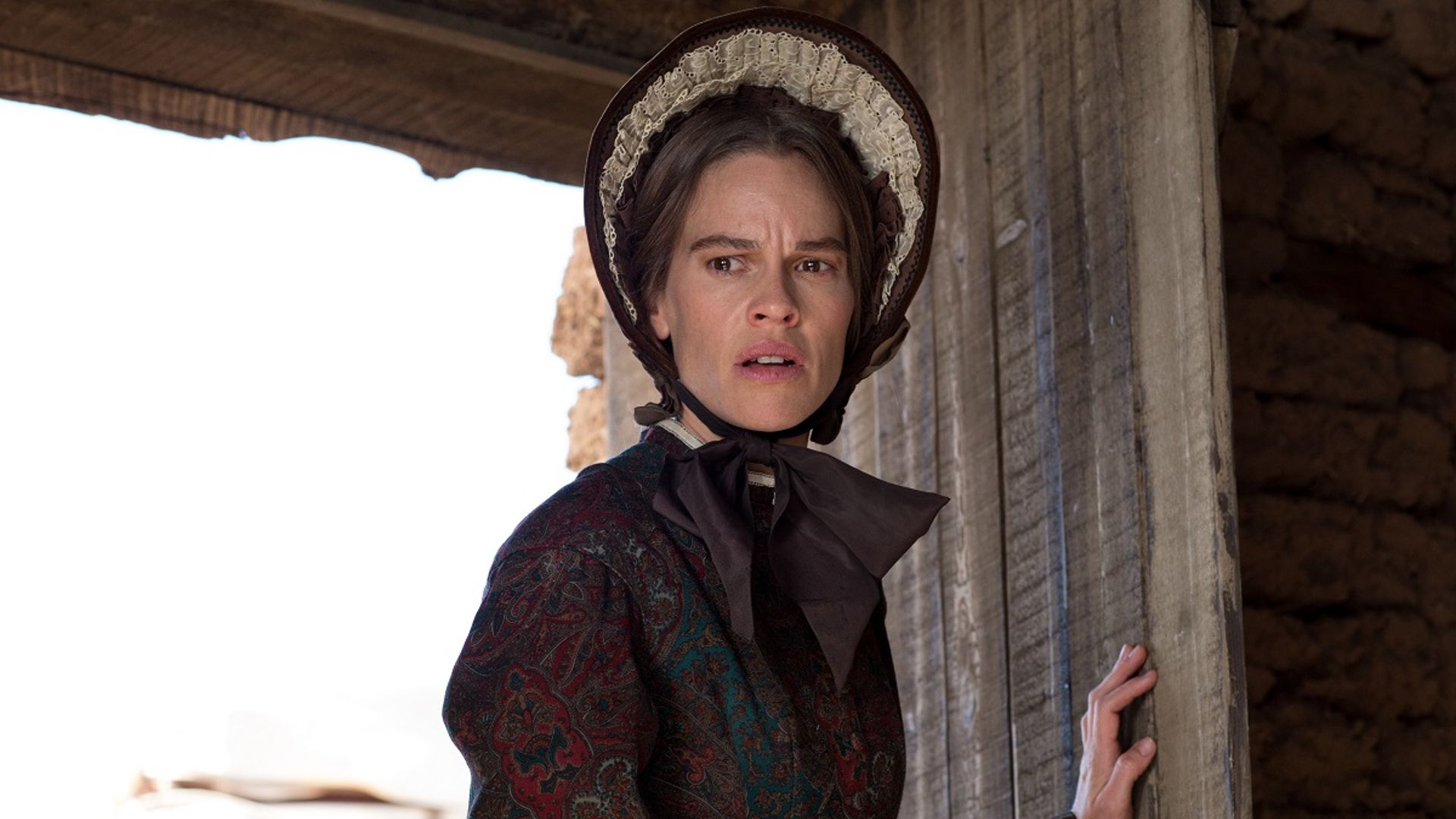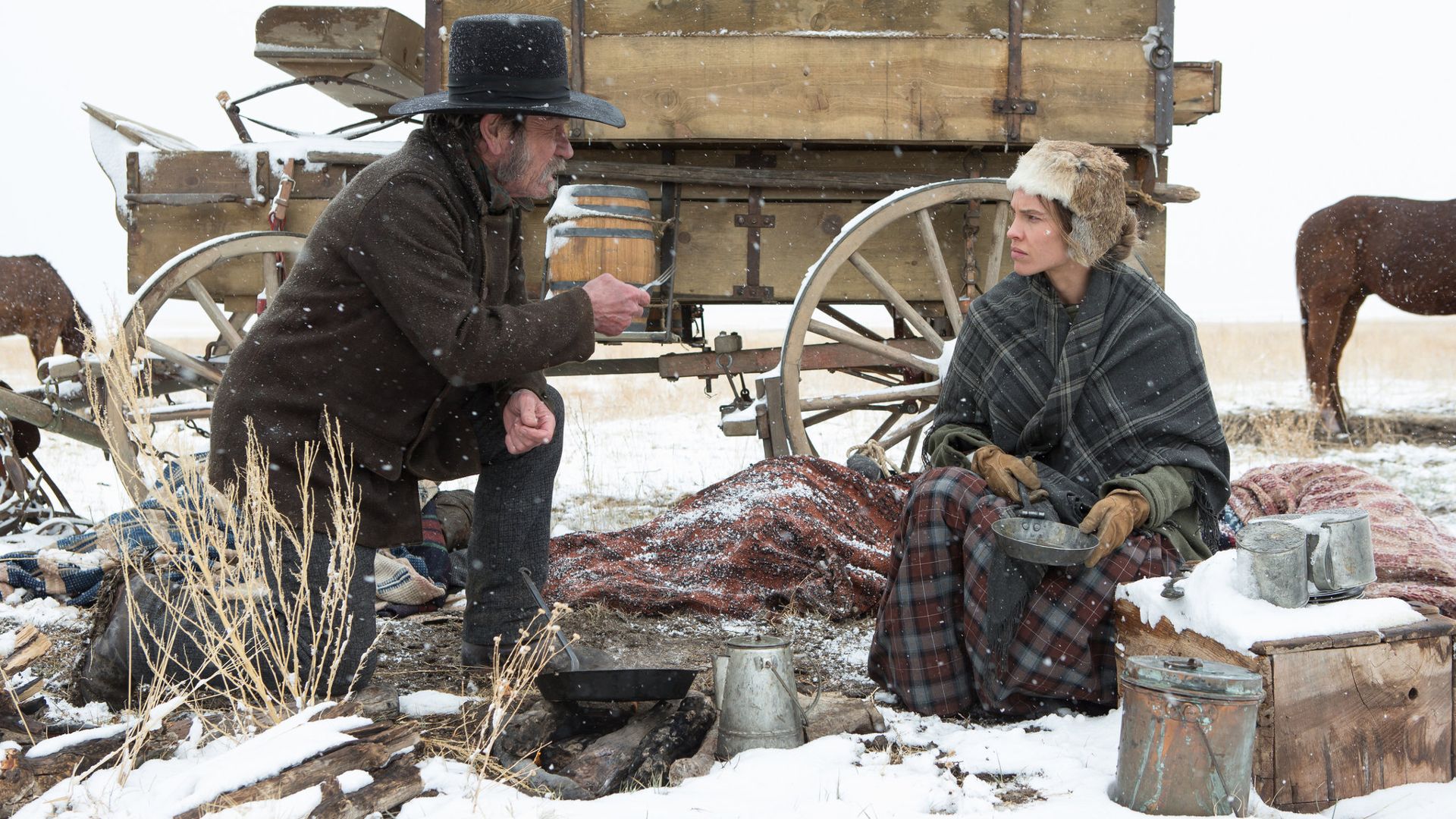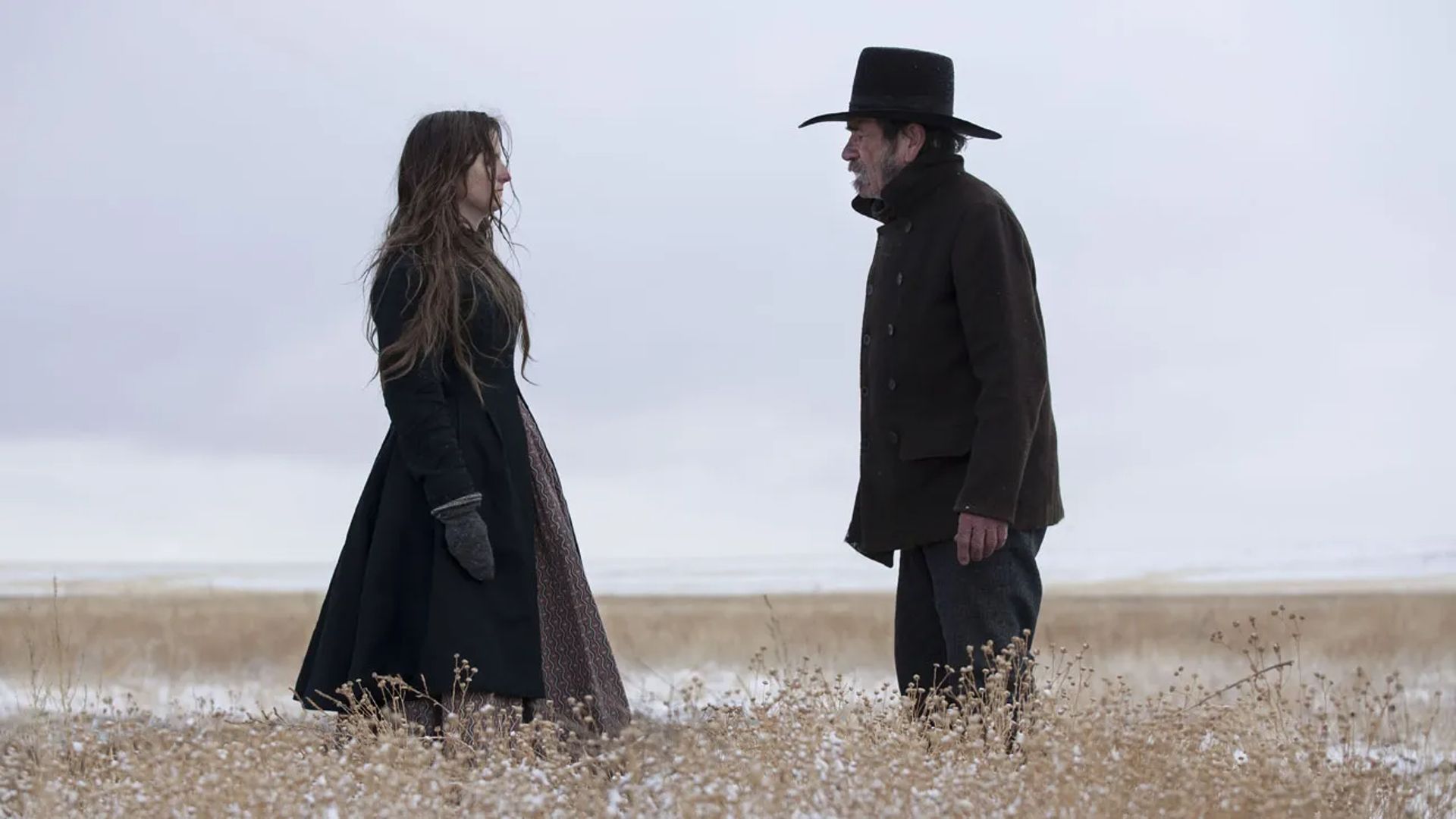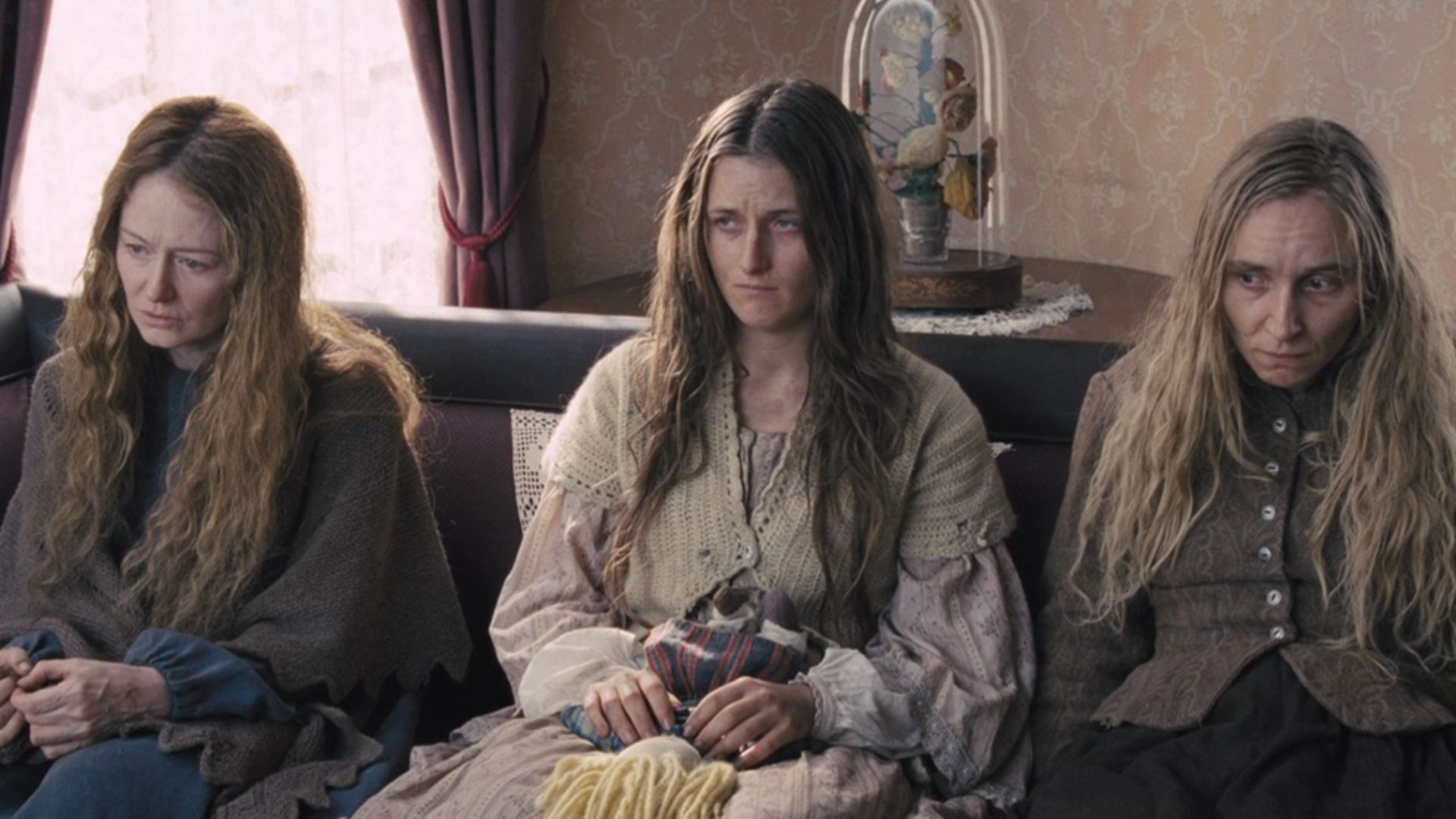Summary
- The Homesman is a brutal look at American frontier life in the 1850s, showcasing harsh realities and unrelenting struggles.
- Lead performances by Swank and Jones shine in this underrated Western, exploring themes of isolation and mental illness.
- The film's bleak ending highlights the unforgiving nature of the frontier, resonating with modern discussions on mental health.
Co-written, directed by, and starring Tommy Lee Jones, The Homesman is an unflinching period western exploring the cruel and unforgiving life on the American frontier in the mid-19th century. Based on the 1988 novel by Glendon Swarthout, the story concerns Mary Bee Cuddy (Hilary Swank), a New York educator searching for a better life in Nebraska Territory in the 1850s. When a trio of women who suffer from mental illness require Mary's assistance, she teams up with George Briggs (Tommy Lee Jones) to escort the afflicted to Hebron, Iowa.
With The Homesman celebrating its 10th anniversary this November, it's an opportune moment to look back and reflect on the movie's themes and explain what transpires at the end of the story. The title refers to escorting immigrants back to their homeland, but the movie is less about the destination than the harsh reality of the journey. With two outstanding lead performances and a stellar ensemble cast supporting them, The Homesman gets to the heart of what it was like on the American frontier during westward expansion.
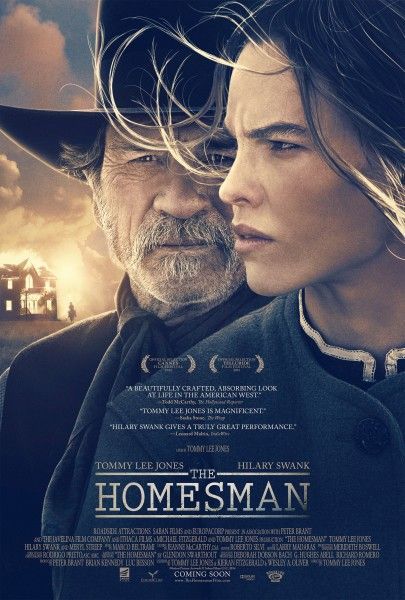
The Homesman
- Release Date
- November 14, 2014
- Director
- Tommy Lee Jones
- Cast
- Tommy Lee Jones , Hilary Swank , Grace Gummer , Mirando Otto , Sonja Richter , Jo Harvey Allen , Barry Corbin , David Dencik
- Main Genre
- Western
- Runtime
- 122 Minutes
- Writers
- Tommy Lee Jones , Kieran Fitzgerald , Wesley A. Oliver
What is The Homesman About?
To comprehend the end of The Homesman, it's important to understand the setup. The underrated movie Western begins in 1854 in Nebraska, where a 31-year-old single school teacher named Mary Bee Cuddy has relocated from New York. Mary is a strong, independent pioneer woman who owns a plot of land in the farming town of Loup. Despite her financial success, Mary feels lonely and isolated and suffers from depression.
Mary finds a newfound purpose when three local immigrant women act out violently as a result of "Prairie Madness," requiring Mary to escort them from the Nebraska Territory to Hebron, Iowa, where they can receive medical assistance at a Methodist Church. The immigrant women include Arabella Sours (Grace Gummer), Theoline Belknap (Miranda Otto), and Gro Svendsen (Sonja Richter).
After agreeing to escort the women from Nebraska to Iowa, Mary finds a man with a noose around his neck named George Briggs (Jones). George is a claim jumper who has been fatally threatened for stealing land belonging to Mary's neighbor, Bob Giffen (Evan Jones). Mary sets George free on the condition that he helps her escort the women to Iowa. George reluctantly agrees after Mary promises him $300 (which she keeps for herself), and the odd couple goes on a road trip across the harsh Midwestern landscape during the snowy winter.
Everything changes for Mary when the group encounters a Pawnee tribe on their journey. Arabella is kidnapped, and her search leads the group to the grave of an 11-year-old girl vandalized by the Pawnee. Mary insists on fixing the grave, but George vows to move ahead. Mary tells the others that she will stay behind to clean up the grave alone and catch up with the group in due time. Due to the underdeveloped and unforgiving landscape, Mary gets lost and travels in circles for two days as the overlooked 2014 Western nears its ending.
What Happens at the End of The Homesman?
When Mary eventually catches up with George, she insists they get married. George declines, citing he's not a farmer and is ill-equipped for domestic life. Mary had already been declined marriage by Bob Giffen, who claimed she was too ugly and controlling to be his wife. In a shocking twist of fate that sets up the movie's final act, George finds Mary's dead body after she hangs herself. The utter despair, hopelessness, and hardscrabble lifestyle of the American West left Mary feeling as if there was no place for her in the world and her sense of isolation and alienation became too much to bear.

The 15 Best Hilary Swank Movies, Ranked
Double Academy Award-winning actress Hilary Swank has quite the film repertoire. From Million Dollar Baby to Boys Don't Cry, here are her best movies.Following Mary's shocking demise, George blames Arabella, Theoline, and Gro's mental illness for her death. George buries Mary's body, finds the $300 she promised him, and ditches the three women on horseback. The women follow him on foot, and when Araballa nearly dies crossing a river, George saves her life and agrees to take them to Iowa.
At every turn, George and the women are met with callous cruelty. In Iowa, they enter a vacant hotel but are turned away by the owner, who claims the women would sully the establishment. The owner also claims he is reserving rooms for 16 wealthy male investors who've yet to arrive. As a result of being turned away, George vengefully sets the hotel ablaze, leaving the inhabitants inside to burn alive.
How Do The Homesman's Themes Resolve in the End?
In Hebron, George completes the task, delivering the three women to the nursing arms of Althea Carter (Meryl Streep in a minor performance). Remorseful of rejecting Mary's marriage proposal, George has a wooden gravestone made with Mary's name engraved on it, which he plans to place beside her tomb. Sadly, the $300 reward is rendered valueless when George discovers that the Bank of Loup has shut down during his travels. With few options left, George proposes marriage to a young hotel maid named Tabitha (Hailee Steinfeld), who halfheartedly responds with a "Maybe." Mary's memory forces George to reconsider marriage, but he is rejected just as Mary was. Neither character has a happy ending as a result.
The Homesman concludes with George all alone, boarding a boat headed back West. As he belts out an old English dirge and fires a pistol into the air, Mary's wooden grave plaque falls into the water without him noticing. Even the act of kindness George does to honor Mary's memory is all for naught, reminding viewers of how brutal life on the American frontier was in the mid-1800s. The axiom "No good deed goes unpunished" rings true for Mary and George, who, despite their charitable acts, are treated coldly throughout the story due to the times.
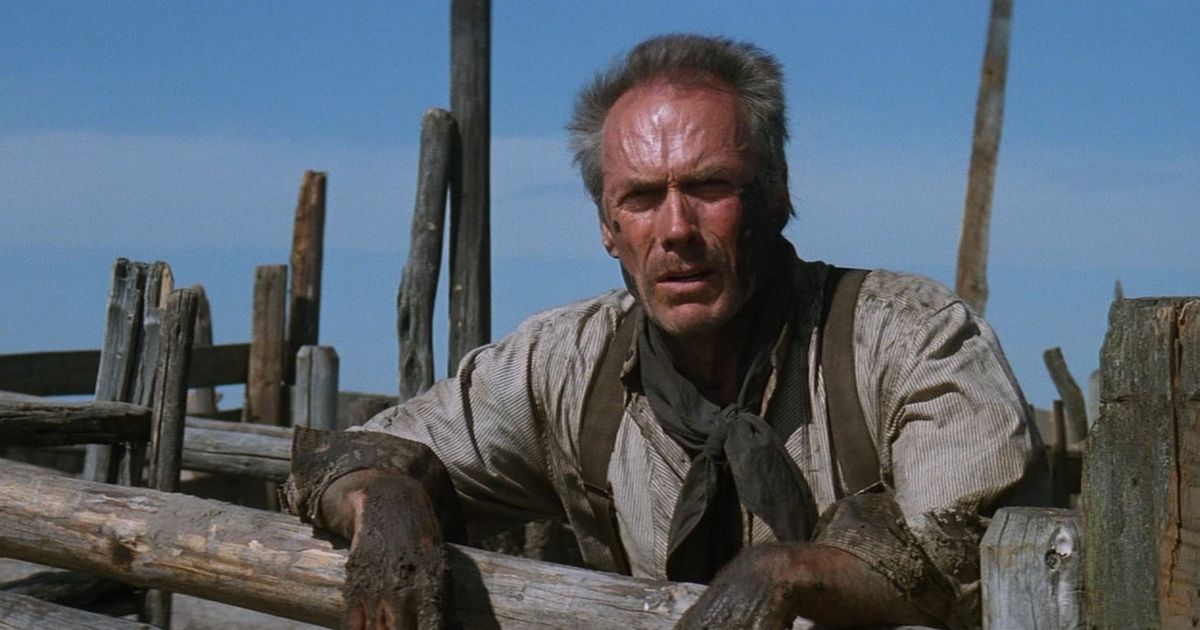
15 Saddest Western Movies Ever Made
Many Westerns are grim, but the following are more likely to cause audiences to shed a tear.For women especially, frontier life was not easy and the options for upward mobility were limited. The title Homesman refers to escorting immigrants back to their homeland, often done by men. Mary's attempt to escort the three women ended in a suicidal tragedy, underscoring the harsh conditions of the times. Meanwhile, the immigrant women in the film are demonized and vilified for experiencing a natural phenomenon many experienced when settling in America.
Is The Homesman Worth Revisiting?
Despite nearing its 10th anniversary, The Homesman is arguably more timely than ever. Mental illness has become a hot-button issue in the past decade, especially during the Pandemic lockdown. The acclaimed Tommy Lee Jones movie depicts the mental illness of Arabella, Theoline, and Gro as a result of "Prairie Madness," a real-life condition afflicting immigrants who settled in the American heartland during the 19th century. Due to long bouts of boredom, isolation, alienation, loneliness, and depression, immigrants would often lash out with violence.
While America has come a long way since the days of westward expansion, depression, and mental illness continue to rise in 2024, especially among young people. Therefore, despite the brutally downbeat ending that magnifies the harsh lifestyle of the American frontier, The Homesman is worth revisiting nowadays. Beyond the brilliant performances by Jones, Swank, and the supporting ensemble, the movie chronicles the history of the American psyche relative to the brutal living conditions of frontier life. And not only for indigenous natives, but also for men, women, children, and immigrants.
The Homesman is available to stream on Netflix.

